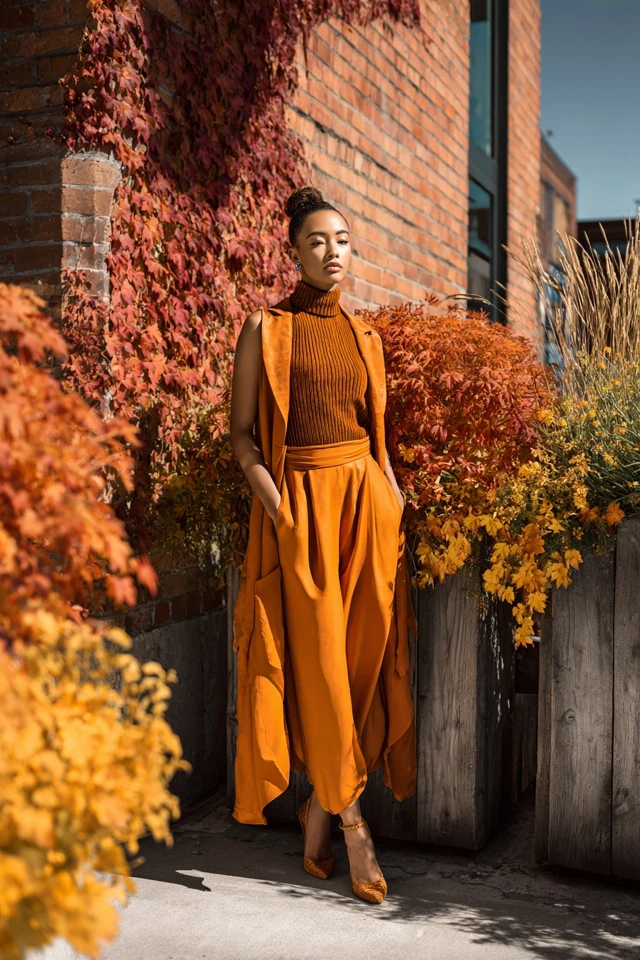Introduction
There’s a moment each fall when the crisp air brushes your skin and the world shifts from summer’s brightness to autumn’s warm embrace. I still remember stepping outside on a brisk October morning, wrapped in a carefully curated layering ensemble, drenched in autumnal hues that felt as comforting as a warm cup of tea. That day, I not only felt cozy but seen — my color choices seemed to amplify my confidence and presence in the bustling streets. For those of us who love fashion, this is the magic of fall layering: it’s not just about warmth but mood, identity, and personal style in full bloom.
Understanding and mastering the modern fall layering color palette is more than following fleeting trends; it’s a deliberate fusion of psychology, design, and self-expression. The way we dress profoundly shapes how others perceive us and, more importantly, how we feel about ourselves. As someone with advanced studies in fashion design and color psychology, I know how essential it is to select colors that work not only aesthetically but also emotionally and psychologically.
About the Author and My Trend Boutique
This post is designed to be your comprehensive guide, weaving academic insights with practical advice, to help you embrace fall layering with intention and style. Whether you’re refreshing your wardrobe or just curious about how color and layering can elevate your look and mindset, you’ll find strategies backed by research yet approachable enough to play with right now.
Foundational Concepts
Before diving into specific shades and outfit ideas, it’s crucial to understand the underpinning concepts that make fall layering with color such a powerful tool. Three key ideas stand out: color psychology, trend forecasting, and dressing to impress.
Color Psychology
Color psychology explores how hues affect human emotions and behaviors. Research shows that colors don’t just influence mood; they can modify our physiological responses, impacting heart rate, brain activity, and even decision-making. For example, warm tones like burnt orange and deep reds evoke feelings of warmth, comfort, and passion—ideal for the fall season.
From personal experience, wearing colors aligned with my mood often enhanced my confidence, especially during challenging days. When I wore a rich camel coat or olive layers, I felt grounded, more attuned to the season’s energy. This emotional harmony between color and mood is why understanding color psychology is essential for anyone interested in fashion’s deeper influence.
Trend Forecasting
Trend forecasting is not just about predicting what’s “in style” next season; it’s a sophisticated analysis of cultural shifts, consumer behavior, and design innovation. Experts track runway shows, street styles, and consumer data to identify emerging colors and silhouettes. For example, modern fall palettes often see a mix of muted earth tones paired with unexpected pops of jewel hues—blending nature-inspired shades with a fresh twist.
As a fashion designer and consumer, I’ve witnessed how staying informed allows one to invest in pieces that blend trend relevance with longevity—crucial for sustainable and smart dressing.
Dressing to Impress
Dressing to impress goes beyond superficiality. It’s about harnessing fashion—especially through color and layering—to communicate confidence, professionalism, and approachability. Whether you’re heading to a business meeting or a casual brunch, your outfit is a form of nonverbal communication that can open doors.
Studies show that first impressions are often formed within seconds and significantly influenced by color and style. Layering with the right palette allows a nuanced visual story, indicating creativity, warmth, or authority depending on your color and fabric choices.
Picture Gallery
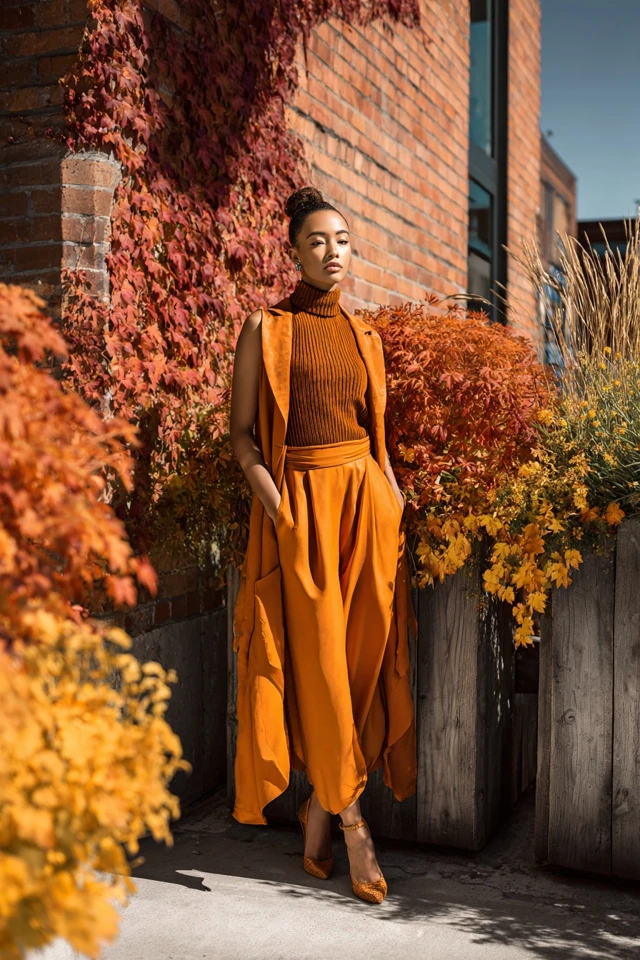
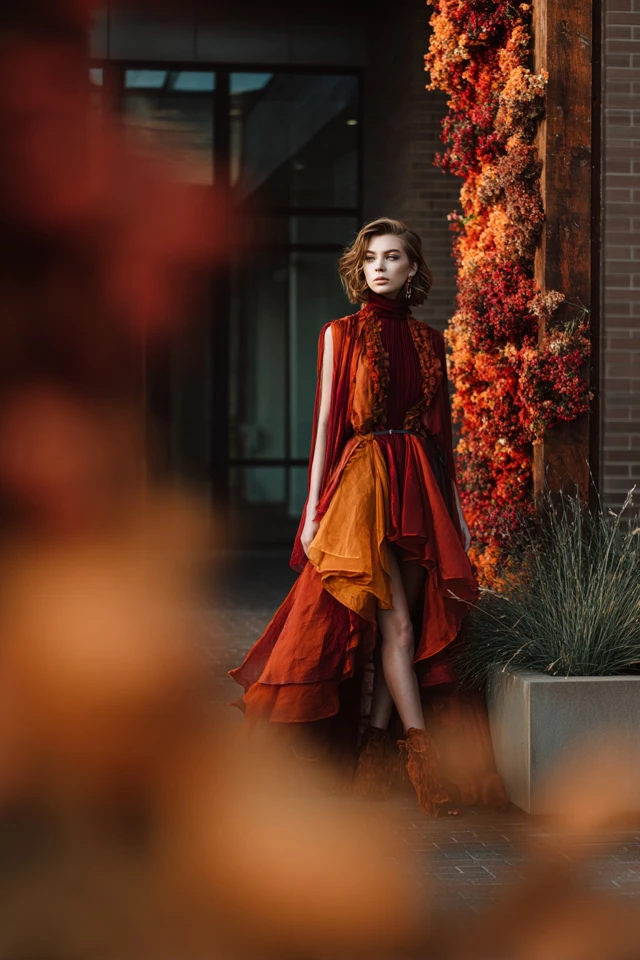
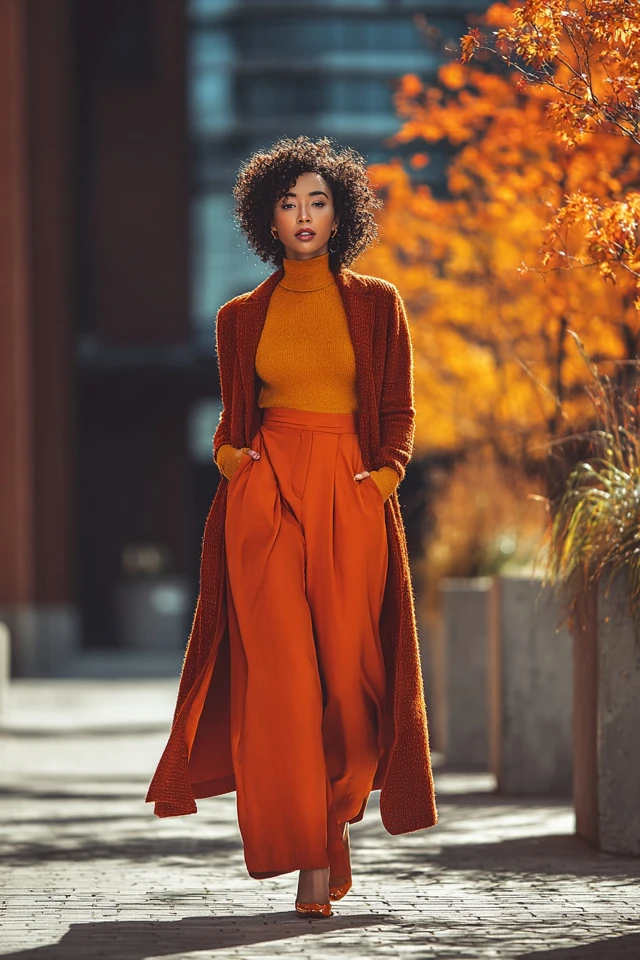
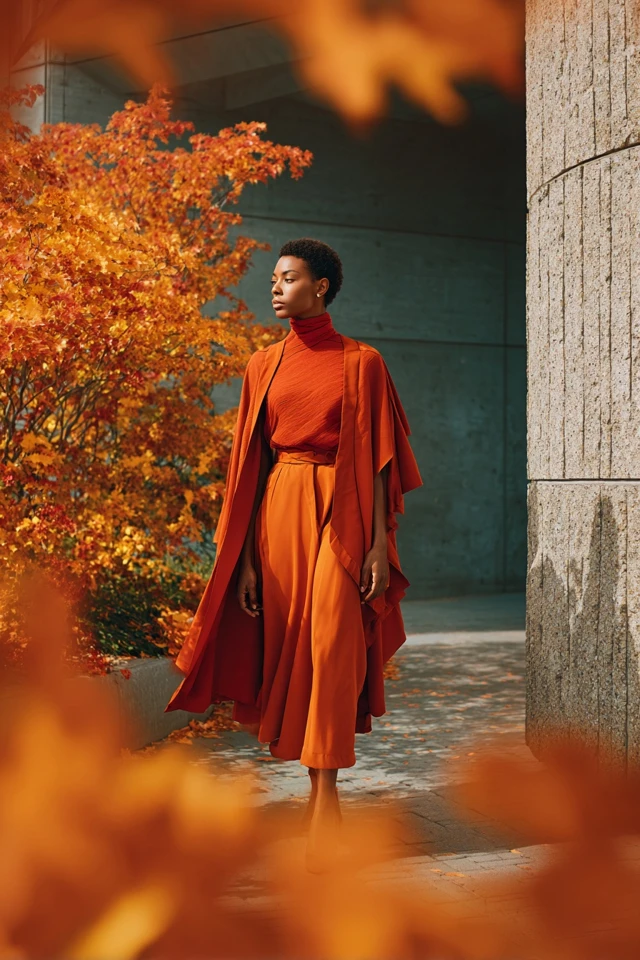
Color Psychology & Emotional Impact
The emotional resonance of color has powerful implications in fall fashion. For instance, deep burgundy signifies richness and maturity, invoking a sense of calm confidence. Contrast this with mustard yellow, which injects optimism and energy into layered outfits, brightening dreary autumn days.
Scientific studies suggest that colors can influence cognitive performance and interpersonal interactions. Wearing calming blues might decrease stress levels, while earthy greens reconnect you with natural rhythms, providing mental balance. These effects extend to social perceptions—colors impact how approachable, trustworthy, or competent you appear.
For example, a layered outfit combining warm rust tones with subtle neutrals can convey reliability and creativity simultaneously, striking the ideal professional balance for a fall work setting. The strategic use of color layering enhances this emotional narrative, adding depth and dimension.
Personal Style & Body Type Considerations
When selecting colors and layering pieces, personal style and body type play essential roles. It’s not about conforming to arbitrary rules but enhancing your unique features.
Silhouettes and Fabrics
- Hourglass figures: Focus on fitted or belted layers that accentuate the waist. Cozy sweaters under structured coats in warm tones like caramel or plum can create sophistication without bulk.
- Apple shapes: Prioritize layering that elongates the torso—think longline cardigans and open coats in darker hues such as deep olive or charcoal, paired with brighter accents near the face.
- Pear shapes: Balance wider hips by drawing attention upward using scarves and collars in vibrant jewel tones like sapphire or cranberry.
- Rectangle shapes: Create curves with layered fabrics that add dimension—ruffled blouses under vests or structured jackets in colors with contrast, such as burnt orange with soft cream.
Complexion & Color Matching
Undertones in your skin should guide your color palette choices. For example:
- Warm undertones: Earth tones like mustard, rust, and olive will complement your complexion.
- Cool undertones: Opt for jewel tones such as deep plum, navy, or emerald green.
- Neutral undertones: Most fall colors work beautifully, but try muted shades over overly bright ones to maintain harmony.
Quick Personal Style Checklist
- Do your garments enhance your body’s natural lines? (Yes/No)
- Are your colors making you feel confident and vibrant? (Yes/No)
- Do your layers add comfort without bulk? (Yes/No)
- Are fabrics appropriate for weather and occasion? (Yes/No)
- Do you have at least one statement color or accessory per outfit? (Yes/No)
Current Trends & Timeless Classics
Modern fall layering embraces a blend of innovation with timeless staples. Popular color stories currently highlight terra cotta, sage green, and soft blush as fresh fall options, adding a modern softness to the traditional palette. These colors pair beautifully with classic wardrobe anchors like camel coats, black leather boots, and crisp denim.
Layering trends focus on versatility and texture contrast, an evolution from bulky sweaters to mixed fabrics like knitted vests over cotton blouses or wool scarves layered on leather jackets. The art of combining modern hues with evergreen pieces ensures your wardrobe stays current yet enduringly stylish.
For instance, pairing a sage green cable knit sweater with a trench coat in camel creates a harmonic and effortlessly chic fall look, perfect for urban or casual occasions. Investing in neutral basics means you can rotate in trendy pieces season after season while maintaining cohesion.
Practical Tips & Recommendations
To make your fall layering both stylish and sustainable, here are actionable recommendations:
- Shop smart: Prioritize quality over quantity. Choose versatile pieces in foundational colors like camel, charcoal, olive, and navy that allow easy pairing with standout items.
- Layering technique: Start with lightweight base layers—cotton or silk shirts—then mid-layers like sweaters or vests, finishing with outerwear that protects without overwhelming your silhouette.
- Accessorize thoughtfully: Select scarves, hats, or belts in contrasting or complementary colors to add visual interest without clutter.
- Wardrobe maintenance: Care for your fabrics by following specific washing instructions to maintain color vibrancy and fabric integrity, crucial for fall outerwear like wool or suede.
- Experiment with color combos: Try pairing unexpected fall colors such as blush pink with rust, or navy with mustard yellow for a fresh but harmonious look. Consider your complexion and mood to adjust palettes.
Here are a few quick color combos for inspiration:
- Burnt orange, cream, and olive green
- Deep burgundy, camel, and charcoal gray
- Mustard yellow, navy blue, and soft blush
- Forest green, chocolate brown, and cream
Visual aids such as color swatches illustrating these palettes can help you test combinations before committing to purchases.
FAQs
- Q: How do I find my signature fall color?
- A: Start by exploring colors that make you feel confident and match your skin undertone. Experiment with small accessories first and note which hues consistently evoke positive feelings and compliments.
- Q: Can I update my fall wardrobe on a budget?
- A: Absolutely. Focus on acquiring a few versatile layering basics in neutral colors. Use accessories and a few trend-forward pieces in seasonal colors to refresh your look affordably.
- Q: How do I build a fall capsule wardrobe?
- A: Choose a base of neutral shades and silhouettes that fit your lifestyle. Add 5–7 colorful or textured layers for versatility. Prioritize quality fabrics and timeless cuts to maximize wearability.
- Q: What fabrics work best for fall layering?
- A: Natural fibers like wool, cashmere, cotton, and silk are breathable and insulating. Blend textures like chunky knits with smooth silks for visual interest and comfort.
- Q: How can color psychology improve my professional image?
- A: Wearing colors associated with trust, competence, and calm—like navy, burgundy, and charcoal—can positively influence first impressions in the workplace, enhancing your perceived professionalism.
Conclusion
Mastering the modern fall layering color palette is an enriching journey that combines scientific insight with the joy of personal style. By understanding how colors affect emotions and perceptions, incorporating body type and complexion considerations, and staying mindful of both trends and timeless pieces, you can create ensembles that empower and inspire. Layering is not just about warmth—it’s about crafting a harmonious statement that tells your story through color and texture.
I encourage you to experiment boldly, mixing familiar neutrals with seasonal favorites and paying attention to how your choices make you feel both inside and out. Fashion is a vibrant form of self-expression that invites continual discovery and confidence-building. Please share your fall layering stories, favorite color combos, or any questions in the comments below. Don’t forget to subscribe for more expert insights on style, color psychology, and dressing to impress.

